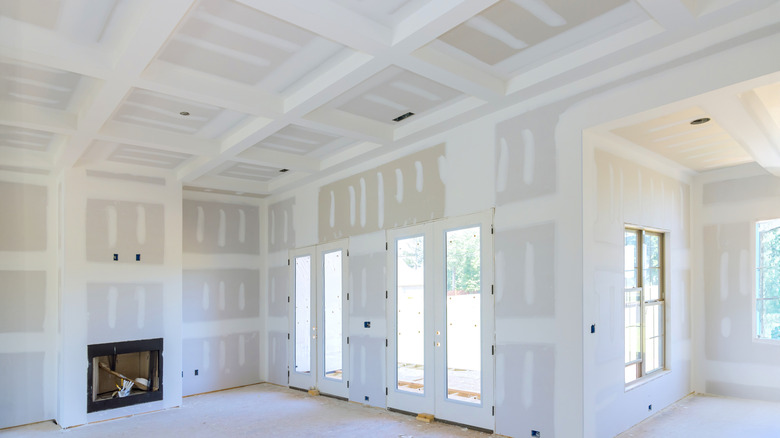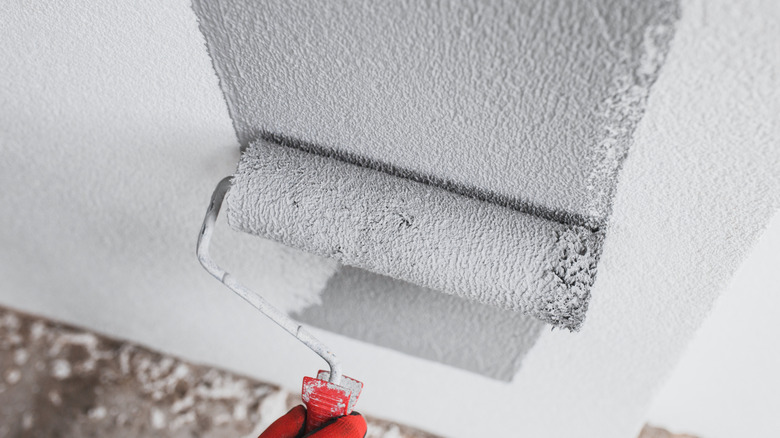The Risks Of Applying Paint To Fresh Plaster (And What To Do Instead)
Plaster is a game-changing material when it comes to repairing cracks in stone surfaces or as a decorative effect for your interior walls. It's an incredibly durable mixture of mortar and some form of hardener that's used in both residential and commercial applications. If you've just upgraded your walls with plaster, you're probably excited about rolling up your sleeves and adding a touch of personalization with some paint. But don't jump in too soon! Painting fresh plaster before it's fully dry can lead to issues like flaking and bubbling that could ruin your hard work. However, there are some things you can do, like watching humidity levels and keeping good airflow in the space.
There are three main types of plaster that are used for interior walls, and each has its own set of properties based on the type of hardener that's used. The main plaster varieties include the gypsum, lime, and cement categories. Each one is used in different ways, but all have roughly the same drying time, a few days to several weeks, for some applications. Gypsum is known for its smooth surface and being easy to apply, while lime is great for waterproofing, and cement is ideal for adding durability to both indoor and outdoor walls. Regardless of which option you choose, you'll need to be aware of the risks of painting fresh plaster and what to do to prevent making this serious mistake.
Why you shouldn't paint fresh plaster and what to do instead
How soon you'll be able to paint your plaster depends on the application process and the environment. For example, skimmed plaster, which involves adding just a thin, smooth layer to the wall, typically dries in three to four days. A full plastering job uses a much thicker layer of the material and takes anywhere from four to six weeks to fully dry. Plaster has permeable qualities, meaning if any paint is added to it before it's set, it will absorb the moisture and end up flaking right off. In this situation, you usually have to scrape all of the paint off the walls and smooth the surface with sandpaper.
Before painting, look for some signs that your plaster is fully dry (after waiting the recommended time). You should notice a shift in color, with the wall turning an even, pale pink. There should be no patches, and any sign of brown color still lingering is a sign that the wall is not quite ready for paint. If you need to speed up the process, try opening a window or running a dehumidifier. However, this method also comes with the risk of drying too fast and causing imperfections. The best way to make sure your plaster walls are flawless is to be patient and wait however long that's needed for the wall to dry. When the surface is ready, add a mist coat before the first layer of paint. This combination of water and emulsion paint works as a sealer for the bare plaster and provides excellent preparation before painting to guarantee a sleek finish.

